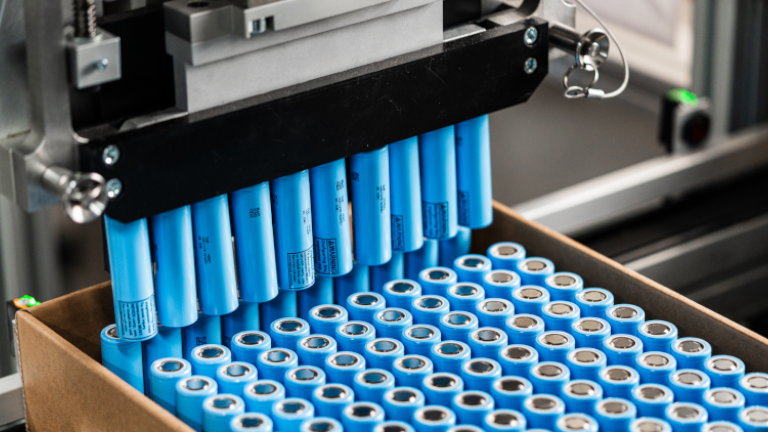Even with cell batch management and cell sorting processes in place, there will always be some minor differences between cells after manufacture. Over time, these differences can become exacerbated, especially as not all cells in a battery will be subjected to the same temperature conditions.
Table of Contents:
Takeaways:
- Cell balancing ensures uniform charging across all battery cells, which improves battery performance and longevity.
- Passive cell balancing is simpler and more common but results in some energy loss.
- Active cell balancing is more efficient but requires more complex circuitry and is ideal for applications needing high energy efficiency.
- Cell balancing is a critical feature to look for in battery management systems, especially for long-term battery usage.
Why is cell balancing important?
This means that it’s very important to have cell balancing functionality implemented in a battery’s BMS. This uses the same wires as SCM (single cell monitoring) and is used at the last phase of charging.
What does the battery cell balancing process look like?
With cell balancing, the charging of the battery stops when the voltage of just one cell exceeds 4.2V. Passive cell balancing then discharges the affected cell using a small resistor, and charging then resumes. This process repeats until all cells are balanced to a given mV threshold (balancing to +/- 1mV is not practical).
By using this process, the service life and available capacity are prolonged. But there is a downside, as the time taken to charge is longer, plus there is a small amount of energy loss, due to the heat generated by the resistors being used.
The problem of energy loss can be resolved by using active balancing. This works similarly, but instead of discharging cells, the cells with the lowest voltage are charged individually, or energy is transferred from cells with the highest SoC to those with the lowest.
The process of active cell balancing is a far more efficient process but requires much more complex circuitry, meaning it is only suitable in specific situations where every bit of energy is important.
In conclusion, passive balancing is suitable in most cases. But the important thing is to have any type of cell balancing feature if you want the battery to be used for many years.
Low quality batteries might not have cell balancing, but at EMBS, we offer cell balancing in battery management system as standard. We’ll be able to advise when cell balancing is beneficial and determine the optimal settings for the best results for your application.
FAQ:
What is cell balancing in battery systems?
Cell balancing is a process used in battery management systems (BMS) to ensure that all individual cells within a battery pack maintain equal voltage levels. This is crucial because even minor differences in cell voltages can lead to reduced performance, capacity loss, or premature failure of the battery.
Why is cell balancing important?
Over time, cells within a battery can become imbalanced due to manufacturing variances, temperature differences, or varying charge/discharge cycles. Implementing cell balancing helps to:
– Extend the overall lifespan of the battery.
– Maintain consistent performance and capacity.
– Prevent potential safety issues related to overcharging or deep discharging of individual cells.
What are the two main types of cell balancing?
There are two primary methods of cell balancing:
Passive Balancing: When a cell’s voltage exceeds a set threshold (e.g., 4.2V), the excess energy is dissipated as heat through a resistor. While effective, this method results in energy loss and longer charging times.
Active Balancing: Instead of dissipating excess energy, active balancing redistributes it from higher-voltage cells to lower-voltage ones, maintaining overall energy efficiency. However, this method requires more complex circuitry and is typically used in applications where energy conservation is critical.
Which balancing method is more commonly used?
Passive balancing is more commonly implemented due to its simpler design and cost-effectiveness. It’s suitable for most applications where minor energy losses are acceptable. Active balancing, while more efficient, is reserved for specialized applications where every bit of energy counts.
How does cell balancing affect battery charging time?
Cell balancing can extend charging times, especially when passive balancing is employed. This is because the BMS may need to pause charging to allow for balancing, ensuring that all cells reach the desired voltage levels.
Is cell balancing necessary for all battery systems?
While not all battery systems incorporate cell balancing, it’s highly recommended for multi-cell configurations. Implementing cell balancing ensures uniform cell performance, enhancing the battery’s longevity and safety.
About the Author
EMBS
Leading manufacturer of advanced battery systems with a market presence of over 25 years. We specialise in rechargeable lithium-ion batteries, producing a wide range of systems with varying power and capacity.
